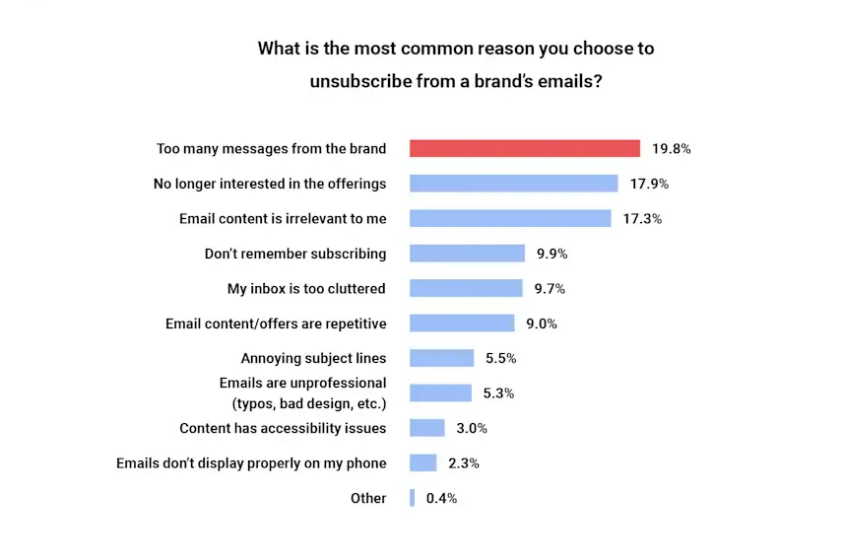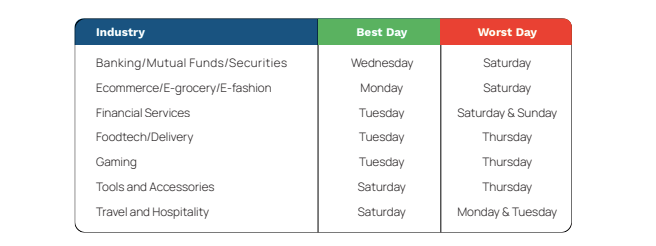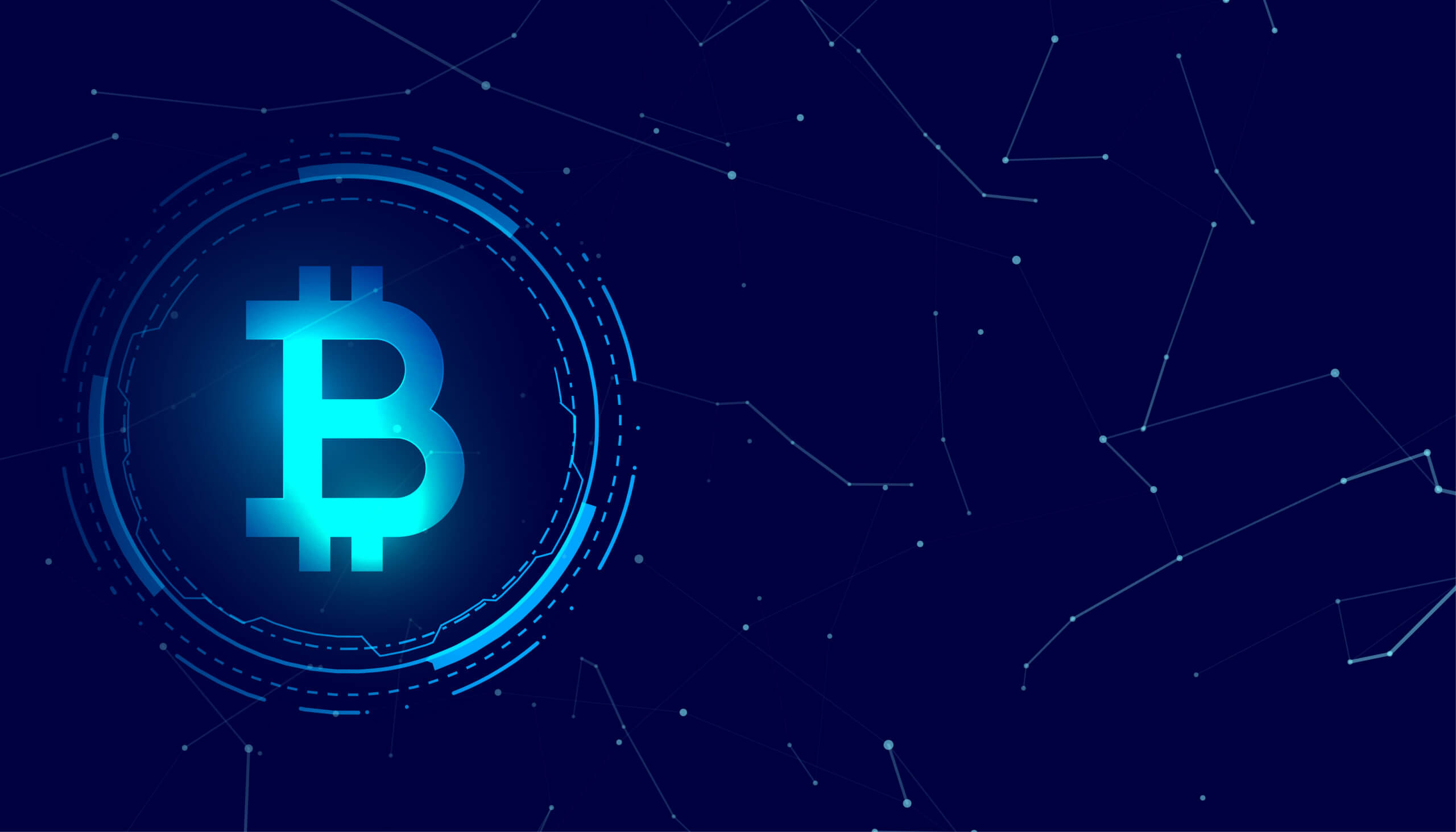Are one-off email marketing messages working for you? Or do they feel like you’re pinning the tail on the donkey while blindfolded?
If it’s the second option, you need automation and a plan. Don’t leave your email campaigns to blind luck. Email marketing automation combines timing and relevance to send personalized emails that encourage engagement.
Automated email workflows speak to the reader’s preferences at just the right moment. The result? Your emails resonate, so your prospects are more likely to convert.
Let’s take a closer look at how to create high-converting email workflows to automate your email campaigns.
Why Use Email Marketing Automation Workflows?
An email marketing automation workflow is a trigger-based sequence. It automatically sends personalized emails based on user actions.
But what actions might trigger a series of emails?
Actions such as:
- Shopping cart abandonment
- Resource downloads
- Newsletter sign-ups
- Product purchases
The goal of an email series is to guide a potential customer through a customer journey toward a conversion. And it works. In fact, B2C marketers say that email is the marketing channel with the best ROI.
With so much weight placed on email success, it makes sense to find ways to improve your email marketing strategy.
Email marketing automation saves time and reduces manual workload. Without automation, email marketers need to create and send emails manually. Automated email workflows automatically send tailored emails that resonate with the customer’s experience.
How To Build A High-Converting Email Workflow In 7 Steps
Successful email marketing campaigns are strategic. First off, you need to generate leads.
Then, think of personalization and optimization, as they are key. When you understand your audience and their preferences, you’ll improve engagement tenfold. No more marketing emails stuck in the spam folder.
Here are the steps to build an email workflow that encourages a higher conversion rate.
1. Define a clear purpose and audience
Every email sequence should have a definitive purpose.
- Are you trying to coax old subscribers back into the funnel?
- Are you recovering abandoned shopping carts?
- Are you welcoming new customers?
With a clear purpose, you can track your progress toward this goal. But a purpose isn’t enough on its own. You need to understand what makes those customers tick.
To encourage engagement, segment customers into groups that look and behave similarly. Align emails with recipient behavior and past interactions. This personalized touch builds customer relationships — and shows customers you care about their specific needs.
In fact, advanced segmentation drives 760% more revenue from email marketing campaigns.
2. Use trigger-based personalization
Timing is everything. Emails that follow user actions feel more relevant to the recipient. Why? Because they directly align with what the customer is already thinking about.
You’re offering a customer-centric experience that feels personalized and responsive rather than intrusive. Think about it.
Imagine you’re shopping online, and you get distracted. Wouldn’t you prefer a timely nudge about your full cart instead of random emails selling you unrelated products?
Consider the triggers for each email and schedule send times accordingly. For example, if a user abandons their cart, send an email after two hours. This gives them enough time to return if they’re still interested, without bothering them if they’re not.
(Experiment with different timing strategies to determine when recipients are most likely to engage after taking action.)
3. Craft a compelling subject line
Your subject line is your first impression. So make sure your email subject line stands out in cluttered inboxes.

Personalization and approachability are paramount. Personalized subject lines improve email performance by 77%. Emojis in the subject line boost performance by 73%
4. Create engaging email copy and design
A well-crafted email campaign uses scannable content. Don’t overwhelm readers with walls of text. Add engaging elements like pictures and videos.
(But it’s not always easy to write content that appeals to each segment. This is why a fifth of email marketers are using AI to help write their copy.)
Consider your buyer personas deeply when crafting content. Really understand their core pain points, desires, and needs. Refine your content so it resonates with these groups. Ask AI to give you hooks you can use to grab attention for each segment.
Remember, designs should be responsive since many recipients check emails on their phones. Email marketers know this, which is why half of them now design emails with mobile-first design. Incorporating visually rich content, like AI-generated food photography, can also significantly boost engagement, especially for brands in the food and hospitality sectors.
Look for an email marketing platform with customizable, pre-built templates that adapt to any device.
5. Think strategically about timing and frequency
What’s the most common reason people unsubscribe from email lists? Too many marketing emails.

And unsubscribes aren’t the only issue. When you hound customer inboxes, recipients start to mark your emails as spam. This affects email delivery and placement.
The more people who mark you as spam, the more email clients will send your communication straight to the spam folder. In other words, space out emails to avoid overwhelming your customers. Test frequency by analyzing open rates after each campaign.
Test timings, too. Email open rates can depend on the time the recipient receives the message. This can depend on the industry you work in. For example, gaming companies should send emails on Tuesdays and avoid Thursdays. Travel firms should send emails on Saturdays but not on Mondays and Thursdays.

Use these benchmarks as a starting point. (But look for your own sweet spot.) Use your email analytics to work out the best time to send emails based on how your readers respond.
6. Include a strong call-to-action (CTA)
Your marketing emails should have a purpose. They’re guiding customers toward action. Make that action clear. If there’s no CTA or it’s not obvious what your intention is, you could be wasting your email marketing efforts.
7. Monitor, test, optimize
To optimize your email strategy, test different approaches and see which performs best.
A/B test different elements, such as:
- Email content
- Subject lines
- Send times
Head to the analytics section of your email marketing software to track performance. These insights show you which campaigns and email elements achieve your goals best.
Types Of Email Marketing Automated Workflows: 5 Popular Examples
Different types of email workflows serve different goals.
Here are six of the most effective email workflows:
1. Welcome series
This three-to-five email sequence triggers when new email subscribers sign up for your list.
It might include a thank-you email or confirmation email, followed by emails that share resources. You’d follow this up with a special offer to encourage purchases.
2. Abandoned cart recovery
An abandoned cart campaign uses urgency to remind users of their unfinished purchases. They release automatically when a customer has items in their cart but clicks off your website without finishing the purchase.
You might send an email reminder in the first hour and follow this up with a discount offer later that day. The next day, you’d send a final “don’t miss out” email.
3. Post-purchase follow-up
Encourage customer loyalty and feedback by following up purchases with an email sequence.
Try sending a thank-you email immediately with an incentive to buy more. Follow this with advice on how to care for the product and encourage them to ask questions. Finish off with an email asking for a review.
4. Re-engagement campaigns
Target inactive users to reduce unsubscribe rates. Send emails after a user has been inactive for a certain period of time.
You might reach out to an inactive subscriber with a personalized discount first. Follow this up with a survey about preferences and interests. Finish off with an email with personalized recommendations.
5. Upsell and cross-sell series
Encourage repeat purchases and higher total cart values with emails that upsell and cross-sell. This is a good chance to create loyal customers by recommending relevant products.
A three-part sequence might offer tailored recommendations in the first email, followed by a personalized limited-time offer. The last email might be a loyalty or referral discount.
Conclusion
With the help of email marketing tools, you can automate sequences to keep your brand top-of-mind. Email marketing tools help nurture leads, improve customer experiences, and move customers through the sales funnel — all without much effort.
But there’s no need to take it all on yourself. For expert help with your digital marketing strategy and email marketing practices, talk to the team at ReVerb. We’re the all-in-one marketing solution you need to elevate your brand and drive more conversions.








